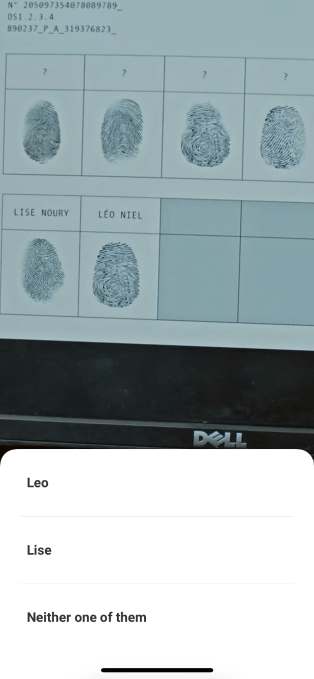Nowhere is the mess we’re in more volatile than the media war on its rationale for economic survival. As broadcast television gives way to cable and now subscription television, the news networks are caught in a market crash. Trump’s loss in the election and social excommunication has made it super hard for the 3 main cable news channels to make a living. In turn that has rippled through the news economy and put pressure on the difference between the old nightly news hosts and the new landscape.
Mobile phones have made it easier to wait for notifications of breaking news than climb on the hourly analysis model that endlessly recycles the same talking heads we’ve already abandoned. Many of those experts have morphed into the Trump bookstakes, where old breaking news about January 6th and the 2020 election is carved up into soundbites and graphics, and then debated by the roundtables. Fox remains the ratings leader as MSNBC passes CNN, but overall viewership is down massively. MSNBC’s star Rachel Maddow made news recently by negotiating with the network to cut her daily show back to a weekly show and focus more on long-form programming with podcasts and books or even events. While her new deal seems to continue her daily shows for at least the next year, the handwriting is on the wall for the entire structure of hosts and anchors.
It was therefore not coincidental when Brian Williams announced he’s leaving NBC for greener or perhaps techier pastures. We’ve talked about the news restructuring on the Gillmor Gang, so Frank Radice and I took the opportunity to record a Clubhouse conversation about Williams and his move. Frank has known and worked with Brian for some thirty years, first at WCBS and then at NBC, where Williams was the anchor of the NBC Nightly News half hour broadcast. After a scandal involving his description of being under fire in a helicopter that turned out to be at best an exaggeration, he was removed from the show for a six month unpaid leave.
Eventually, he resuscitated his career as a breaking news anchor on MSNBC and started a nightly 11th hour show just outside prime time that drew good ratings and a highly paid grandfathering of his multimillion network salary.“At 11:00 East Coast and and obviously 8:00 right in the middle of dinner on the West Coast,” observes Radice, “there was a huge financial problem for MSNBC, especially under a new sort of tight fisted leader.” Something had to give. The Maddow negotiations took some considerable money off the table, and Williams’ ratings seemed to be less of a huge priority for the network. My guess is that Williams was not given much of a choice; he thought he might be able to do better in the news climate of streaming and tech replatforming Maddow is exploring.
“What I would do if I were Brian,” says Radice, “because he’s not old, but he is in terms of what people are buying online and on television and on the air these days. It seems like they’re not buying experience, they’re buying some kind of cultural thing. He has to remain culturally relevant. I would go to CNN Plus and go back to work with Jeff Zucker and and actually own news online.
“The fact is that when you lose in the news business, certainly in the sort of old boy’s club, which Brian may be the last vestige of, is gone. And you’re in that sort of atmosphere. The idea that somebody would be your godfather is what would be a strong mentor today. And both of the people that were there for him are gone—the chairman of the company, Andy Lack and the president of MSNBC, Phil Griffin,” Frank continues. “And his contract is up at the end of the year. And he’s got a high salary. And there’s a move afoot to change the on air, if not the appearance and look and vibe of, but the structure and content of primetime through late night. So all of those factors added up at the same time. From my perspective, if you’re going to go out, you’ve gone from being on top to being on the bottom to being back sort of on top again, go out sort of on top instead of not the other. The other argument, by the way, against going to CNN is why would he go from the No. two network to the No. three network? I don’t believe that. That’s just looking at the numbers and not really looking at the viable importance of CNN globally.”
We ponder Williams’ ability to add a wry sense of humor to the mix, the blend of news and late night talk show storytelling he got in trouble with. Frank pushes back and runs the CBS job up the flagpole one more time: “I can see that he makes a deal with a CBS to replace Norah O’Donnell and get 4 1-hour specials a year to do that. And that could be valuable to CBS. He comes with a built in audience, it’s over a million people, so you know that that’s valuable. Tom Snyder? He can do that, but I don’t think that anything like that will work in today. Look, it could be… it’s kind of like what we’re doing right now, except one of us is famous and maybe smarter.”
I suggest the only thing I’ve seen in the press about a CBS move is that he’s not interested in that. Frank: When you hear from someone that they’re not inclined to want to do something, that’s probably exactly what they’re inclined to do.
the latest Gillmor Gang Newsletter
__________________
The Gillmor Gang — Frank Radice, Michael Markman, Keith Teare, Denis Pombriant, Brent Leary and Steve Gillmor. Recorded live Friday, November 12, 2021.
Produced and directed by Tina Chase Gillmor @tinagillmor
@fradice, @mickeleh, @denispombriant, @kteare, @brentleary, @stevegillmor, @gillmorgang
Subscribe to the new Gillmor Gang Newsletter and join the backchannel here on Telegram.
The Gillmor Gang on Facebook … and here’s our sister show G3 on Facebook.






